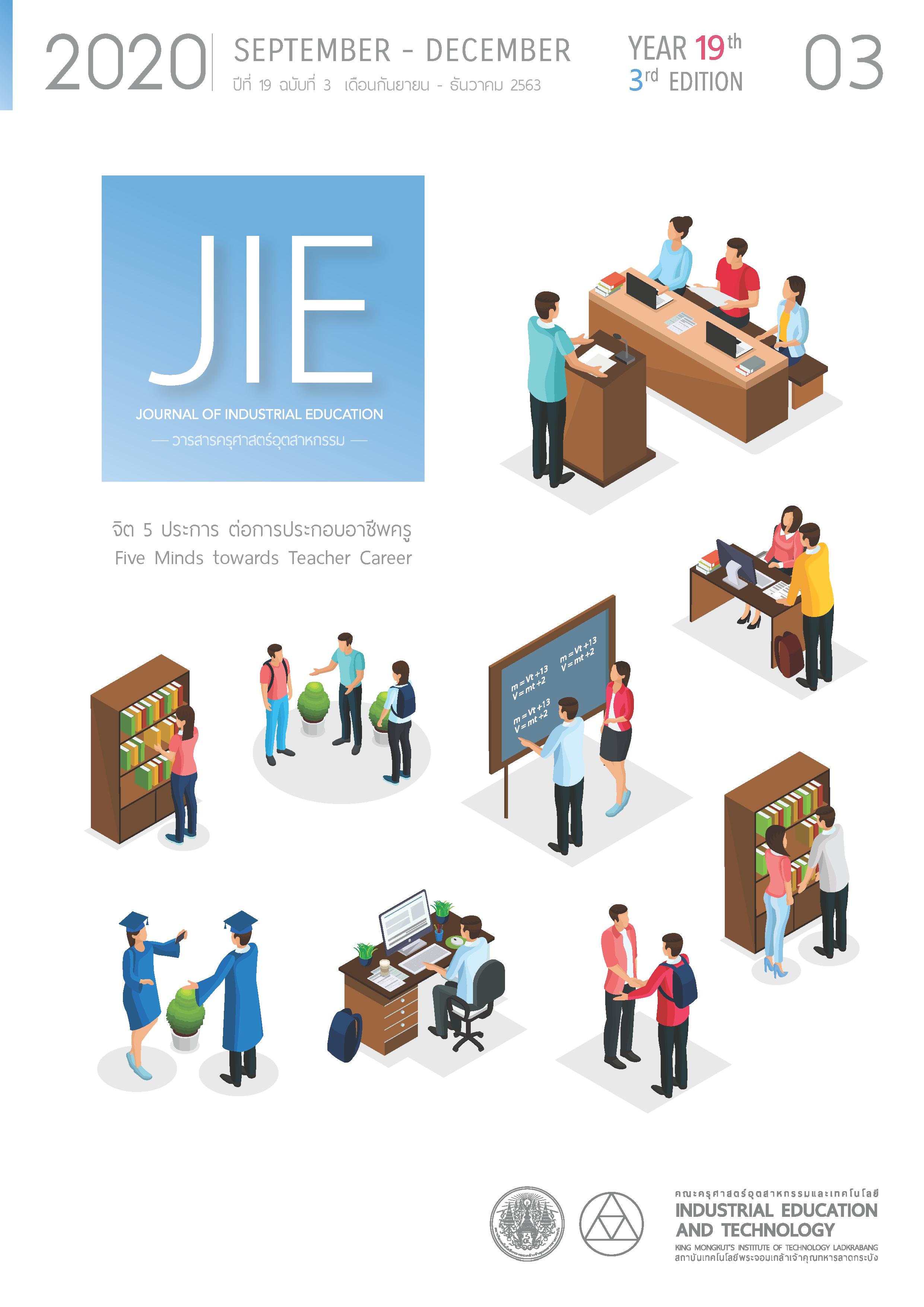DEVELOPMENT OF PSYCHOLOGICAL IMMUNITY SCALE FOR UNDERGRADUATE STUDENTS
Keywords:
psychological immunity, psychological immunity scale, undergraduate student, factor analysisAbstract
The purpose of this research was to develop the psychological immunity scale for undergraduate students. In the first step of developing the psychological immunity scale, the researcher used the qualitative research method to define the meaning of psychological immunity by 1) reviewing relevant documents, 2) using the in-depth interview conducted with a semi-structured questionnaire to 15 informants from the professional teaching group, and 3) using an open-ended questionnaire to 80 undergraduate students in teaching profession. In the second step, the researcher developed the psychological immunity scale and analyzed for 1) the content validity index, which was in range of 0.80 - 1.00 2) the discrimination, which was in range of 0.328 - 0.688 and 3) the overall reliability using Cronbach's Alpha coefficient, which equals to 0.913. In the final step, the researcher collected data from the sample group of 500 undergraduate students in teaching profession in order to analyze the survey components using Principal component analysis and Orthogonal rotation by Varimax method. The results showed that the components of the psychological immunity test were divided into 4 factors, which were 1) adaptability, 2) understanding others, 3) self-understanding and 4) self-esteem that could explain about the variance of psychological immunity at 52.905% while each factor above (1, 2, 3, and 4) could explain about the variance of psychological immunity at 36.336, 6.207, 5.722, and 4.640% respectively.
References
Piyamanotham, W. (2002). Talk to a psychologist 1. Bangkok: se-education. 17-25. (in Thai).
Kantathanawat, T. (2020). Educational psychology for learner development. Bangkok: Mean Service supply. 177-182. (in Thai)
SiriratReka, T. (2017). RQ - Resilience Quotient.[online]. Available: https://www.happyhomeclinic.com/a21-RQ.htm Retrieved June 25, 2020. (in Thai)
American Psychological Association. (2007). What is resilience? .[online]. Available: http://psychcentral.com/lib/2007/what-is-resilience/ Retrieved May 9, 2020.
Grotberg, E. (1995). A Guide to Promoting Resilience in Children: Strengthening the Human Spirit. Early Childhood Development: Practice and Reflections, v. 8. The Hague-NO: Bernard Van Leer Foundation. 6-8.
American Psychological Association. (2018). The Road to Resilience. Report of the practice directorate on resilience. .[online]. Available: https://www.apa.org/helpcenter/road-resilience Retrieved May 9, 2020.
Ong, A. D., Bergeman, C. S., Wallace, K. A., & Bisconti, T. L. (2006). “Psychological resilience, positive emotions, and successful adaptation to stress in later life.” Journal of Personality and Social Psychology. 91,4: 730-749.
Oraphin Choochom, Supaporn Tanachanan & Tasana Thongpukdee. (2011). Antecedents and Consequences of Youths’ Psychological Immunity. (Research No. 137). Bangkok: Behavioral Science Research Institute, Srinakharinwirot University. 18. (in Thai)
Wanichbancha, K. (2003). Advanced Statistical Analysis with SPSS for Window .3rd ed. Bangkok: Nature. 49-53 (in Thai)
Elo, S., & Kyngas, H. (2008). “The qualitative content analysis process.” Journal of advanced nursing. 62: 107-115.
Comrey, A. L., & Lee, H. B. (1992). A first course in factor analysis. 2nd ed. Hillsdale, New Jersey: Erlbaum. 42-46
Hair J.F., Black, W.C., Babin, B.J., Anderson, R.E., & Tatham, R.L. (2010). Multivariate data analysis. 7th ed. Upper Saddle River, New Jersey: Prenitce-Hall. 447-455.
Wiratchai, N. (2006). Lisrel Model: Statistical Analysis for Research. 3rd ed. Bangkok: Chulalongkorn University. 115-117. (in Thai)
Bollen, K.A. (1989). Structural Equations with Latent Variables. North Carolina: John Wiley & Sons.
Drost, E. (2011). “Validity and Reliability in Social Science Research.” Education Research and Perspectives. 38, 1: 105-123.
Kachonsil, B. (2002). Statistics Research. Bangkok: PN Publishing. 37-38. (in Thai)
Gable, R.K. (1986). Instrument Development in the Affective Domain. Boston, MA: Kluwer-Nijhoff. 249.
Lazarus, R. S. & Folkman, S. (1984). Stress appraisal and coping. New York: Springer Publishing Company. 47-53.
Aurel, I. C. (2013). “Adaptation and Stress for the First Year University Students.” Procedia - Social and Behavioral Sciences. 78: 718-722.
Suwitthayarat, K. (2014). “The Study and Development of Social Intelligence for Higher Education Students in the South of Thailand.” Suthiparithat Journal. 28, 86, April- June: 126-151. (in Thai)
Gelso, C. J., & Fretz, B. R. (2001). Counseling psychology (2nd ed.). Fort Worth, TX: Harcourt Brace Jovanovich College Publishers. 195-196.
Marcic, R., & Kobal, G. D. (2011). “Gender differences in self-concept and self-esteem components.” Studia Psychologica, 53, 4: 373-384.
Weiten, W., Dunn, D. S., & Hammer, E. Y. (2012). Psychology applied to modern life: adjustments in the 21st century. Belmont, CA: Wadsworth. 46-48.
Maslow, A. M. (1970). Motivation and Personality. 2nd ed. New York: Harcourt, Brace&world. 62-65.
Coopersmith, s. (1981). The Antecedent of Self-esteem. California: Consulting Psychologists Press. 42-43.
Downloads
Published
How to Cite
Issue
Section
License
"The opinions and contents including the words in papers are responsibility by the authors."
"ข้อคิดเห็น เนื้อหา รวมทั้งการใช้ภาษาในบทความถือเป็นความรับผิดชอบของผู้เขียน"



